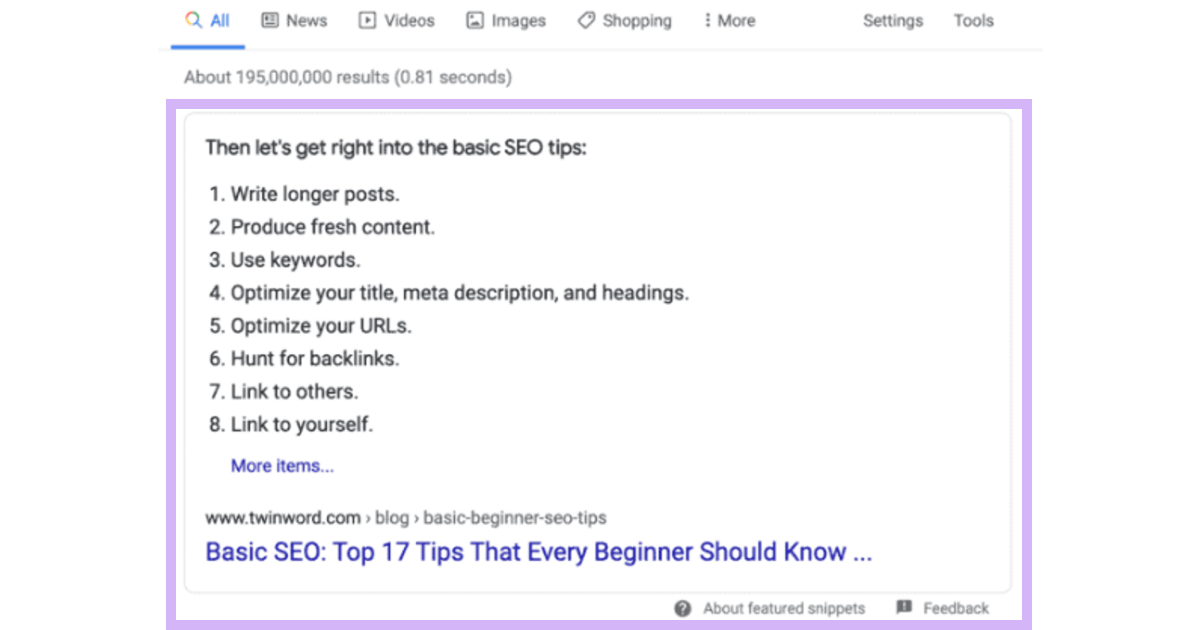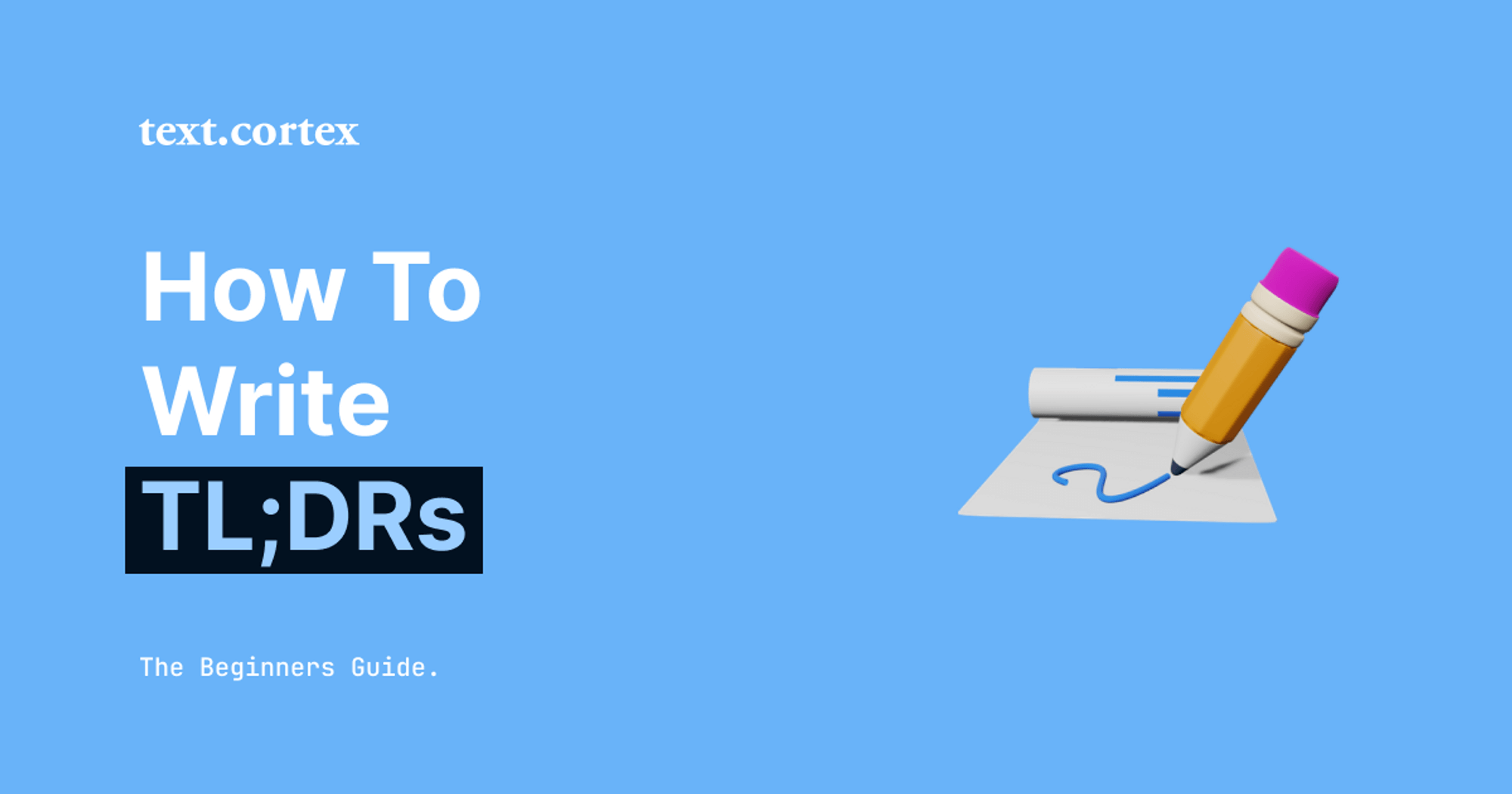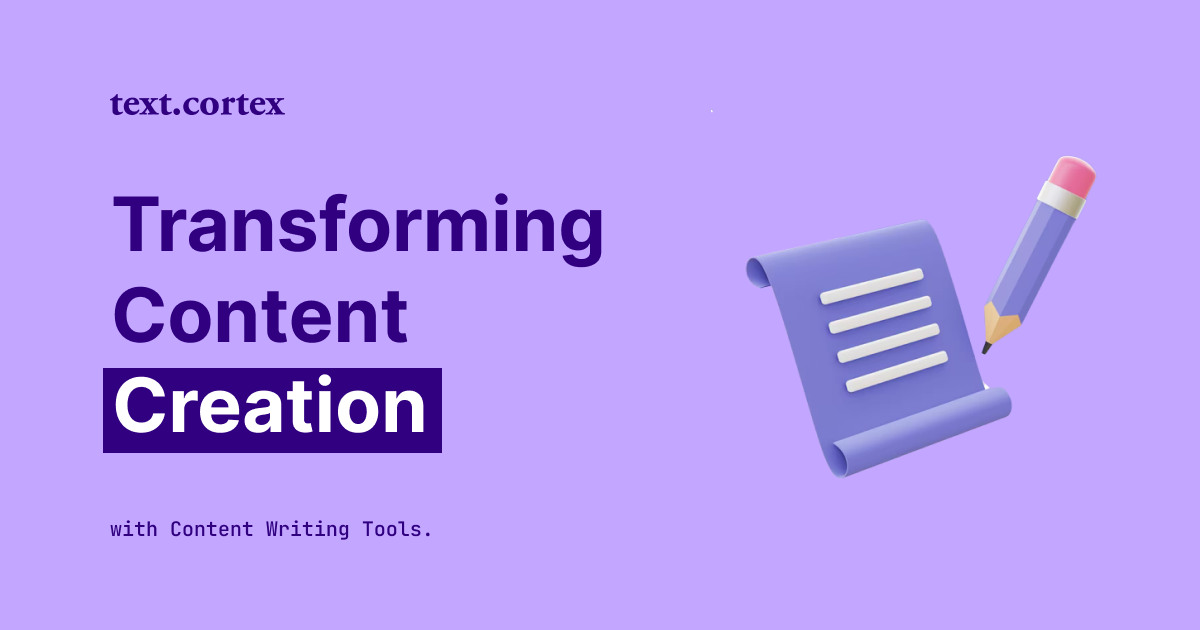Did you know that our attention span is mere 8 seconds and keeps dropping?
Furthermore, with so much information available, readers quickly want to determine whether an article is worth their time.
This is where TL;DRs come in handy - they summarize the key points of an article in just a few sentences.
However, TL;DRs are much more than that.
Not only can they help you capture the attention of busy readers, but they also help you improve your blog's SEO ranking.
Want to find out more?
Join us as we show you how to write TL;DRs to rank your blogs higher and keep your audience engaged.
Let’s dive in!
What is a TL;DR?
A TL;DR, stands for "Too Long; Didn't Read," and this section briefly summarizes an article's main points.
Including a TL;DR can be useful in attracting readers' attention and encouraging them to read on.
Thus, by providing a concise overview of what the article covers, you can give readers an idea of what they'll learn without requiring them to invest too much time upfront.
How to Create an Effective TL;DR?
You can create an effective TL;DR if you keep some key elements in mind:
✨Identify the main points - Carefully read through the content and identify the key ideas or points the content tries to convey.
Think about the main argument, key findings, or main takeaways, for example.
✨Keep it brief - The TL;DR should be short and to the point, so aim for a sentence or two, and avoid lengthy or complex sentences.
On average, the text should be under 150 words since the goal is to provide a quick and easy-to-understand summary.
Note: For example, with TextCortex’s summarizing feature, you can strip down your original content and make it shorter while keeping the original meaning, which can be great for TL;DR section.
✨Use simple language - Make sure your TL;DR uses clear and simple language that is easy to understand.
Avoid jargon, technical terms, or complex language that may confuse readers.
✨Be accurate - It's important to reflect the content in your TL;DR accurately. Therefore, avoid exaggeration or misleading statements that don’t reflect the content.
✨Make it engaging - While TL;DR is meant to be concise, it should still be engaging and capture the reader's attention.
Thus, use compelling and interesting language to encourage users to read further. Furthermore, you can highlight key points such as statistics or quotes which can spark interest among potential readers.
✨Reflect on the tone - Consider the tone and style of the original content when creating your TL;DR.
If your original content is formal, make sure your TL;DR reflects the same tone.
Note: For example, TextCortex’s Tone feature lets you choose from more than 10 tones of voice so your TL;DR can match the rest of your text perfectly.
✨Review and revise - After crafting your TL;DR, review and revise it to ensure it effectively summarizes the main points of the content.
Don’t forget it's important to strike the right balance between brevity and accuracy.
Notes: Remember to tailor your summary for your target audience so you can strike an emotional chord relevant specifically to their needs.
But let’s put our tips into practice and give you a little test.
TL;DR Examples
Check the two TL;DRs below about the importance of exercising.
1. "This article discusses the benefits of exercise."
2. “Discover how just 30 minutes of exercise per day could reduce your risk for heart disease by up to 50% – find out more in our latest blog post!"
Which one would entice you to keep on reading? If your answer is number 2, well done!
Why does it work?
In this case, you have created urgency around the topic while providing specific benefits readers can expect from reading further.
Furthermore, you provided statistics to pique interest and add an element of credibility and proof.
On the other hand, the first summary fails because it's too broad and generic and doesn't provide any insight into why someone should continue reading.
In general, badly-written TL;DRs are:
- too long
- contain irrelevant information
- simply restate the article's title.
In addition, they can also be challenging to understand, leaving readers feeling lost and confused, and you definitely don’t want that.
Besides being important to raise curiosity and invite readers to dive into your article, proper TL;DRs play another huge part - they can assist you enormously with SEO ranking.
How Can TL;DRs Help SEO Ranking?
Search engines often prioritize content that is easy to understand and quickly digestible.
Thus, TL;DR can be relevant in multiple ways regarding SEO ranking.
🔥 TL;DRs can affect user engagement metrics such as bounce rate and time on page, which are important factors in SEO ranking.
The more readers are inclined to continue reading, the more they stay on the page or explore your website further.
🔥 TL;DRs provide an opportunity to incorporate relevant keywords into the summary section of your post, increasing its relevance.
In addition, it makes it easier for readers and search engines to understand the primary focus of your article.
🔥 TL;DRs can also impact social sharing, as users may be more likely to share content with a concise summary.
As a result, the visibility and reach of the content can increase, leading to improved SEO rankings.
What About Featured Snippets?
When speaking of SEO rankings, it is impossible to omit featured snippets.
Featured snippets are concise, summarized answers that appear at the top of search engine results pages (SERPs) in response to specific queries.
In addition, they can also come in bullet points or numbered lists, making it easier for readers to grasp essential information while still providing value.

And what do they have in common with TL;DRs?
Both featured snippets and TL;DR aim to provide users with quick, easily digestible information addressing their query without having to click through to the full content.
In fact, Google often uses a well-crafted TL;DRs as the content for a featured snippet increasing your website’s visibility and traffic, ultimately improving its overall SEO performance.
Let’s Revise
Writing a good TL;DR is essential for any blogger or content writer.
A well-written TL;DR can improve your blog's readability and help readers quickly grasp the main idea of your article.
Remember to keep your TL;DR short, clear, and engaging.
What’s more, use it as an opportunity to entice readers into reading more while providing them with valuable insights.
When used correctly, TL;DRs can boost your SEO efforts by giving search engines a concise content summary.
Consequently, this makes it easier for search engines to understand what topics you cover in your post and rank accordingly.
Crafting effective TL;DRs comes with practice, but the good thing is that AI writing tools can offer great assistance and facilitate and speed up the process.
Create Effective TL;DRs with TextCortex
TextCortex is an AI-powered writing tool offering robust features that span from writing and rewriting to editing your content.
In addition, it boosts your creativity with the features such as:
🔥 Over 60 templates for various texts.
🔥 Over 2000 online platforms where you can use our add-on.
🔥 Rewriting functions like summarizing and paraphrasing.
🔥 Brainstorm feature to get the creative juices flowing.
🔥 Translation to more than 25 languages,
🔥 and many more.
And our current stars are Zeno Mode and Zeno Chat features, enabling you to have a natural conversation with our AI writer on any topic you desire, such as writing TL;DRs.
Take a look:
Interested in giving it a go?
Well, we have more good news coming your way - TextCortex gives you 10 free daily creations, which are enough to test the waters.
Furthermore, you’ll benefit from our rich reward programs if you want to take things further.
So sign up today to write a compelling TL;DR that will capture the attention of both human readers and search engine crawlers alike.
FAQ
1. Where Do You Place TL;DRs?
It will largely depend on the type of writing.
For informative writings, such as blogs, articles, etc., it’s more common to put it in the beginning, so readers know what to expect.
On the other hand, if you share a story might include it at the end to avoid spilling the beans.
2. How do People Use TL;DRs?
Usually, people use it to summarize the main points of their content. Furthermore, you see it also on social media.
In addition, well-crafted TL;DRs can be used as featured snippets, helping you with SEO ranking.
3. Why are TL;DRs Important?
They are important to grab your readers’ attention and provide value. In addition, they can help you position higher on search engines and boost your SEO efforts.
.jpg)

.jpg)


